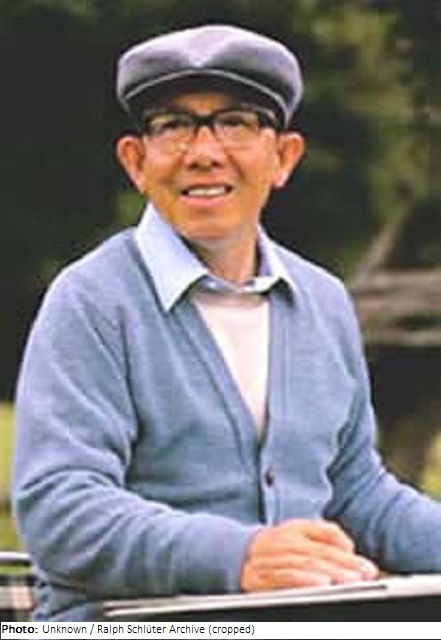
| Roles | Competed in Olympic Games |
|---|---|
| Sex | Male |
| Full name | Shinkichi "Kaii"•Higashiyama |
| Used name | Kaii•Higashiyama |
| Original name | 東山•新吉 "魁夷" |
| Born | 8 July 1908 in Yokohama, Kanagawa (JPN) |
| Died | 6 May 1999 (aged 90 years 9 months 29 days) in Chuo, Tokyo (JPN) |
| NOC |  Japan Japan |
Shinkichi Higashiyama was a painter in the traditional Nihonga style in Japan. His art works – mostly nature and landscape paintings – decorate the Japanese Imperial Palace and the Crown Prince’s palace. They adorn Japanese cult sites such as the famous temple of Toshodaiji in Nara, and various museums and buildings around the world. Japanese landscape painting was never primarily meant to be a realistic representation of nature, but rather more of an expression of spiritual well-being and the artist’s state of mind. In 1933-35 Higashiyama traveled to Germany as an exchange student to study Western art history. He was one of the first students selected for the German-Japanese cultural exchange program.
After World War II, Higashiyama worked temporarily as an essayist, but also learned to use gold and silver dust to make his colors more vivid. This Kirikane technique was widely used in Japan. During his lifetime he often went back to visit Germany and was very impressed by famous German artists such as Albrecht Dürer, Matthias Grünwald, Casper David Friedrich and Emil Nolde.
The painting Shōnen kōri hashi (Boys Skating_) was created in 1931 after Higashiyama graduated from the Department of Classical Japanese Art at the Academy in Tokyo and showed a peculiar mixture of rather Western figures in front of a Japanese landscape typical of Higashiyama. This landscape depicts Lake Aoki in Nagano Prefecture.
| Games | Discipline (Sport) / Event | NOC / Team | Pos | Medal | As | |
|---|---|---|---|---|---|---|
| 1936 Summer Olympics | Art Competitions |  JPN JPN |
Kaii Higashiyama | |||
| Painting, Paintings, Open (Olympic) |